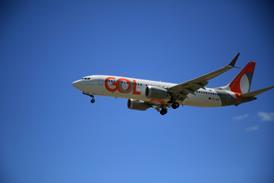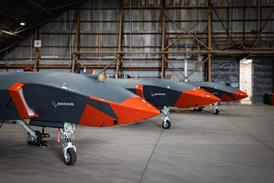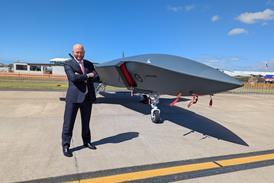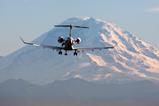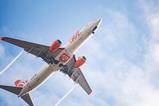Major US airlines are forecasting a return to full utilisation of regional jets that had been slow to return to service in the years following the Covid-19 pandemic.
Executives with American Airlines, Delta Air Lines and United Airlines said during recent earnings calls that they are dialling up the use of the jets, which are flown by partner regional airlines. Indeed, regional carriers have roughly half as many jets grounded now as they did about two years ago.
American on 23 January said it expected its regional-fleet passenger capacity (as measured in available seat kilometres) would increase 17% year on year in the first quarter, “as we return to full utilisation”.
Delta, meanwhile, expects half of its 2025 capacity growth to come from “improved utilisation of both our mainline and regional fleets”, chief executive Ed Bastian said on 10 January, with “incremental capacity deployed primarily into our high-margin core hubs”.
”We expect the regionals to be back to full flying of our assets,” adds Dan Janki, Delta’s chief financial officer. ”We have that capability.”
United recently said that returning its full fleet of regional jets to service will prove the “right call for 2025”.
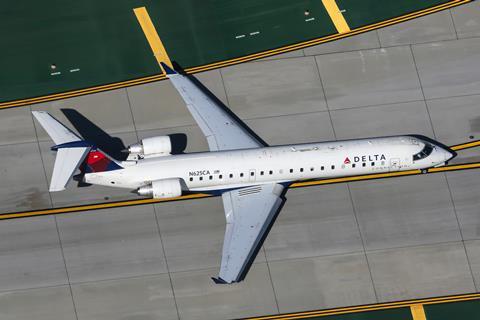
In September, the Regional Airline Association (RAA) confirmed that dozens of regional jets that had been sitting in the Arizona desert were returning to commercial service, with regional airline companies taking advantage of a temporary reprieve in pilot attrition.
As demand recovered from the Covid-19 pandemic, major US carriers frenziedly poached first officers and captains from their regional counterparts – which, in many cases, are subsidiary companies of America, Delta, United and Alaska Airlines.
Faye Malarkey Black, chief executive of the RAA, told FlightGlobal on 23 January that a large aircraft shortage caused network carriers to pause last year their post-pandemic pilot-hiring spree, providing an opportunity for regional carriers to reactivate previously dormant jets.
”Regional airlines have started to return aircraft to service and are producing more flying hours for their partners,” Black says. “Some carriers are even adding growth aircraft.”
Phoenix-based regional carrier Mesa Airlines, for example, said in December that it plans to “significantly increase daily aircraft utilisation rates” beginning this month. Working with partner United’s network planners, it is seeking to boost utilisation from an average of 8.9 daily block hours to 9.5, with further increases to follow.
“While still below pre-Covid levels, the increase in utilisation is a result of significantly reduced attrition throughout all work groups, more-optimal scheduling practices and improved operational performance,” Mesa says.
But Black emphasises that pilot-hiring will remain a pressing issue for years: “Retirements at major carriers are rising and will peak in 2029, then stay high for decades.”
Dramatic reduction of the USA’s regional airline network during the Covid-19 pandemic has not reversed, Black says, with many small and mid-sized communities still having no or minimal airline service.
“The air service ecostyem is still upside down on the number of pilots needed to rebuild 2019 levels of service,” she says, ”let alone grow enough to bring small communities into better air service parity in 2025.”
While the “Big Three” carriers – American, Delta and United – are hiring pilots again, Black says ongoing shortages of large narrowbody Airbus and Boeing jets make 2025’s hiring trends in relation to regional airlines “hard to predict”.
BUILDING BACK
At the height of the post-pandemic pilot shortage, some 500 regional jets were grounded across the USA. That number has since been slashed roughly in half, with 265 regional jets grounded today, according to Cirium, an aviation analytics company.
And some ageing regional jets are leaving rather than entering service. Notably, American carrier discloses that it executed in the fourth quarter a ”$33 million non-cash write down of regional aircraft resulting from the decision to permanently park 43 Embraer ERJ-145 aircraft”.
American says ramping up regional flights fits into its broader plan to overhaul its domestic network.
“It is no secret that we’ve had to build back our network, and we have a large portion of our network that is supported by our regional fleet,” says chief executive Robert Isom.
“I feel great that in 2025 we’re going to have our regional fleet fully deployed,” he says. ”What that’s going to allow us to do is better fill out some of the hubs that, quite frankly, are ready and willing to support the network in a different way.”
As an example, American is planning to implement “one of the largest schedules that we’ve ever had” in Dallas Fort-Worth, Charlotte and Miami, while bolstering its presence in Chicago, Philadelphia and Washington, DC, Isom says.
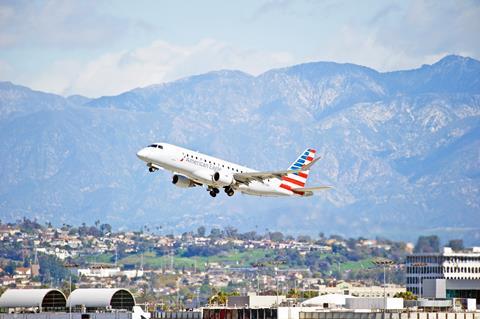
American’s subsidiaries operate a massive 585-strong fleet of regional jets under the American Eagle brand, according to recent filings with the US Securities and Exchange Commission. That includes more than 200 Embraer E-Jets and about 250 MHIRJ CRJ-family jets.
“The domestic product is where we’re so strong,” Isom says. ”We have a regional product that others just can’t touch in terms of the E175.”
American has been phasing out ERJ-145s in recent years in favour of E175s. It now operates 58 ERJ-145s, compared with 164 in 2019, according to Airline Business data.



